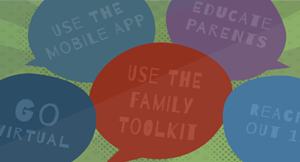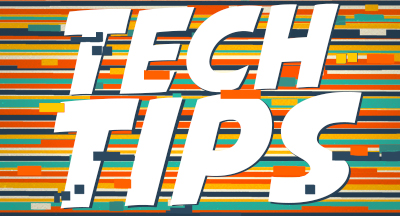Has Your District Tried This Approach to Discipline?

|
Lauren Gilchrist Blogger, Traveler, and Video Talent |
When you think of “behavior management," do you only think of discipline? If so, it may be time to reconsider.
Positive Behavior Interventions and Supports (or PBIS as it is commonly called) is a proactive system designed to improve school safety and promote positive behavior. An increasing number of schools are turning to positive behavior management and seeing the benefits. Let’s take a closer look at what it is and how you can use it in Skyward.
PBIS Overview
PBIS is a data-driven method of behavioral intervention. Like Response to Intervention (RTI), it also has a three-tiered approach, offering different levels of support for students depending on their needs. While RTI focuses more on providing academic supports, the focus of PBIS lies in behavioral supports—students knowing the rules, understanding why they are in place, and having the support they need to stay on track.According to PBIS.org, here’s what the three tiers look like:
Tier 1: Practices and systems establish a foundation of regular, proactive support while preventing unwanted behaviors. Schools provide these universal supports to all students, school-wide.
Tier 2: Practices and systems support students who are at risk for developing more serious problem behaviors before those behaviors start. These supports help students develop the skills they need to benefit from core programs at the school.
Tier 3: Students receive more intensive, individualized support to improve their behavioral and academic outcomes. At this level, schools rely on formal assessments to determine a student’s need.
PBIS in Skyward
Data analysis is an integral part of PBIS—and at Skyward, we love data! Within Skyward you can create behavioral management graphs, keep an eye on trends, and follow along with the actions employees are taking to get students back on the right track. Here are some resources to help you get started.Behavior trends: You can keep track of building-level behavior trends by setting up a multiple discipline graphs report and scheduling reports to automatically be sent to administrators! Find out how in this Quick Hits video.
PBIS discipline graphs: You can also create discipline graphs which show actions broken down by type (detention, in-school suspension, out-of-school suspension, etc.). You’ll even be able to view variables such as the time of day, offense type, location, and motivation, so you can look for trends. Find out how in this Quick Hits video.
Learn more about behavior management in Skyward here.
Behavior Management Best Practices
Here are eight best practices to keep in mind when it comes to keeping your students on the right track.Reward appropriate behaviors. Shine the spotlight on positive behaviors rather than those that are negative. Research has demonstrated that this is the quickest, most effective way to teach students to “be good.” Rewards can take many forms such as verbal praise, a smile, a treat, a positive note home, or “cash” or points to spend at a school store or an event. You can even consider moving the process online, with teachers rewarding students via an app.
Create a Response to Intervention (RTI) program. Implementing an RTI program can help you identify at-risk students and create appropriate prevention and intervention plans to ensure no student falls through the cracks.
Consider external influences. Take the extra step and look into your students’ out-of-school lives. The circumstances they face beyond school walls can have a tremendous impact on the way they behave and the behavior they exhibit in class.
Be willing to communicate. When students and educators get into disagreements, often both sides feel disrespected. Open, honest communication can end this ongoing battle and defuse harbored resentment. Talk with your students about why negative behaviors are occurring and suggest alternative actions. Discuss ways to remove circumstances that trigger negative actions and look for ways to replace such triggers with situations that elicit a positive response.
Expand beyond “Because I said so.” Students must understand why what they did was wrong. They must also appreciate the rules—why they were put in place and how everyone benefits when they are followed.
Criticize the behavior, not the student. Talk with students exhibiting problem behaviors about what they did, what they should have done, or why their actions were wrong. Never make generalizations discussing students’ character or personality traits.
It’s not just what you say—it’s how you say it. When talking to a student, use a neutral or positive tone. Never nag or act annoyed. Conversations in negative tones build walls, not bridges.
Never embarrass a student. Do not single students out in front of others. If an issue occurs, show respect for the student, no matter what he or she did, by talking to him or her privately about it.
There’s certainly no one-size-fits-all approach for behavior management. But by taking the time and energy required to give each student the support, resources, and encouragement they need, you’ll be setting everyone up for success.
Follow-Up Resources
What Is Whole-Child Education?Whole-child education: Serving multiple facets of child development to educate well-rounded kids. Learn more in this whiteboard video.
5 Ways to Track SEL Efforts
How do you measure social-emotional growth without falling back on emojis? Here are five data-driven strategies to make the most impact on SEL in your district.
Who Is Responsible for Mental Health?
School nurses, school psychologists, and school counselors all have "mental health" in their job descriptions. But who's doing what and why does it matter?
Project-Based Learning Is a Perfect Developmental Match for Teens
Project-based learning and teens go hand in hand. Why? Because the approach gives them the structured freedom they need to build agency.
Thinking about edtech for your district? We'd love to help. Visit skyward.com/get-started to learn more.
|
Lauren Gilchrist Blogger, Traveler, and Video Talent |
Lauren enjoys visiting school districts and spreading the word about creative, non-traditional approaches to universal challenges. Follow her for on-the-scene reporting (with a little fun sprinkled in) and tips on how to enjoy a better Skyward experience.

 Get started
Get started





